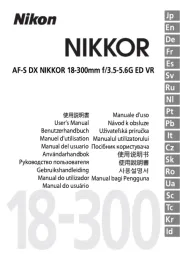Page 2
This 8-16mm lens from Sigma costs around £590 and apart from being the widest lens currently
available for APS-C cropped sensor cameras, it also sports silent internal focusing but doesn't accept
filters, which may put those who like to use filters off this lens.
As there is nothing else quite as wide as this currently, the closest alternatives are the various ultra
wide zooms that start at 10mm. This extra 2mm does make a noticeable difference, and should make
this lens every estate agent's best friend, as it will allow them to make their shoebox sized bedsits
look positively palatial. Sigma offer two different 10-20mm lenses, which both offer silent internal
focusing and accept screw in filters. The more expensive of the two has a constant aperture of f/3.5
through the zoom range and costs around £480. The cheaper alternative has a slower, variable
aperture of f/4-5.6 and costs around £400.
Tamron's closest match is their 10-24mm f/3.5-4.5 SP lens, (reviewed here
http://www.ephotozine.com/article/tamron-af10-24mm-f-3-5-4-5-di-ii-ld-asph-macro-12931 )which
isn't as wide as the lens being reviewed here and doesn't have silent focusing, but only costs around
£380.
Canon users have the EF-S 10-22mm f/3.5-4.5 to choose from, which costs around £640 and includes
a silent focusing motor.
The closest match in Nikon flavour is their 10-24mm f/3.5-5.6 which also sports silent focusing, and
costs around £635.
Sony's current widest lens for their crop sensor Alpha camera is their 11-18mm DT AF lens, which
lacks silent focusing and the width of the Sigma, as all these lenses do, and it costs around £530.
Pentax don't currently make a rectilinear lens wider than 12mm, but they do make a 10-17mm
fisheye zoom, which costs around £430 and lacks a silent focusing motor and will make your straight
lines all bendy, which is fine if that's what you're after.
Sigma 8-16mm f/4.5-5.6 DC HSM: Handling and features
For a lens with such a wide field of view, this 8-16mm optic is surprisingly compact and lightweight
and Sigma have achieved this without compromising the overall build quality. Much of the lens barrel
is constructed from high quality plastics with a powder coated effect applied, which looks very smart,
but can show marks easily. Both the zoom and focus rings are flush to the lens barrel, with ridged
rubber grips, which help to give the lens a very positive feel.
As this is a HSM lens, manual focus adjustments can be made at any time, which can be handy if you
wish to fine tune the focusing while using autofocus. To be honest though, on a lens as wide as this I
rarely found use for this feature as the depth of field is so great at 8mm, it can be difficult to make
adjustments manually.
A scalloped lens hood is built into the lens barrel, providing as much shade as is possible to the large
bulbous front element. As is the case with other similarly wide lenses, such as Sigma's 12-24mm and
15-30mm lenses, there is no way to attach a filter to the front of the lens without causing vignetting.
This may pose issues for those who enjoy using neutral density graduated filters for landscapes.
Focusing is performed internally and the lens does not extend during zooming either.
As you might expect from an ultra-wide lens, focusing is lightning quick, and silent thanks to the HSM
motor. No hyperfocal markings are provided on the lens' distance scale, which is a shame, as
hyperfocal focusing can be extremely useful with a lens like this.
Overall, I really enjoyed using this 8-16mm optic, thanks to its compact dimensions, excellent build
quality and extremely wide field of view.






















